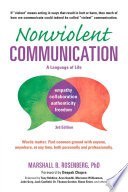Have you ever left a conversation feeling unheard or misunderstood? Or watched a discussion spiral into conflict, straining relationships? I’ve been thinking about communication recently, especially in a time when communication feels like a battleground rather than a bridge. Yet, meaningful dialogue is possible and has the power to heal divides, foster understanding, and strengthen relationships.
This post explores a shift from monologue to dialogue and how we can cultivate intentional conversations that foster real connection.
Why Are We Talking Past Each Other? Understanding the Root of Disconnection
One of the greatest challenges in communication today is that we often engage in parallel monologues instead of true dialogue. Rather than listening with curiosity, we focus on making our point, convincing the other person, or simply waiting for our turn to speak. This approach creates disconnection rather than understanding.
I see this often in my work. Instead of truly listening, we wait for our turn to speak. But when people realize they’re being listened to—not just talked at—they often pause and tell me how powerful it feels to be truly heard.
Disconnection happens when we resist differences—when we struggle to accept another person’s thoughts, feelings, or beliefs. When we talk at someone rather than with them, we miss an opportunity for connection. In organizations, this can lead to workplace toxicity, disengagement, and poor collaboration. In our personal lives, it can strain relationships and increase feelings of isolation.
From Monologue to Dialogue: The Shift That Changes Everything
The key to intentional conversations lies in shifting from a monologue to a dialogue—where both parties feel heard, understood, and valued. I appreciate the work of Harville Hendrix and Helen LaKelly Hunt on IMAGO Dialogue, a simple yet powerful tool for creating safe conversations. The IMAGO dialogue offers a simple yet powerful structure to foster meaningful dialogue:
- Mirroring – Repeat back what the other person is saying to ensure you understand them correctly. Example: “What I hear you saying is that you feel frustrated when decisions are made without your input. Did I get that right?”
- Validating – Acknowledge the other person’s perspective without necessarily agreeing with it. Example: “That makes sense to me because I can see how that would be frustrating.”
- Empathizing – Express understanding for their experience. Example: “I imagine that would make you feel unheard or undervalued.”
This approach creates a space where people feel safe to express themselves without fear of judgment or retaliation, leading to stronger connections and better problem-solving.
How to Apply Intentional Dialogue in Work and Life
Whether leading a team, planning for the future, or simply improving daily interactions, the IMAGO dialogue framework can be transformative. Consider the following scenarios:
- In Meetings: Rather than pushing through an agenda, create space for dialogue. Use reflective listening and ask open-ended questions to invite deeper participation.
- In Conflict Resolution: Instead of reacting defensively, use mirroring and validation to de-escalate tension and find solutions that honor everyone’s needs.
- In Leadership: Model intentional communication by actively listening, demonstrating empathy, and encouraging a culture where everyone feels heard.
- In Personal Relationships: Strengthen connections by prioritizing understanding over being right. When someone shares their thoughts, pause before responding and ask, “Can you tell me more about that?”
Your Challenge: One Small Change That Can Transform Conversations
A safe conversation using the IMAGO Dialogue doesn’t require grand gestures. Small changes—pausing before reacting, seeking to understand rather than to persuade, and creating space for true dialogue--are a great place to start.
As we navigate what feels like a fragmented world, how you communicate can be a force for connection, healing, and transformation. Moving from “talking past each other” to meaningful dialogue can open the door to deeper understanding—and that’s where real change begins.
This week, try an experiment: In one conversation, resist the urge to jump in with your perspective. Instead, pause. Mirror what the other person is saying, validate their feelings, and express empathy. Notice the shift—both in the conversation and in how you feel afterward.
Further Exploration










